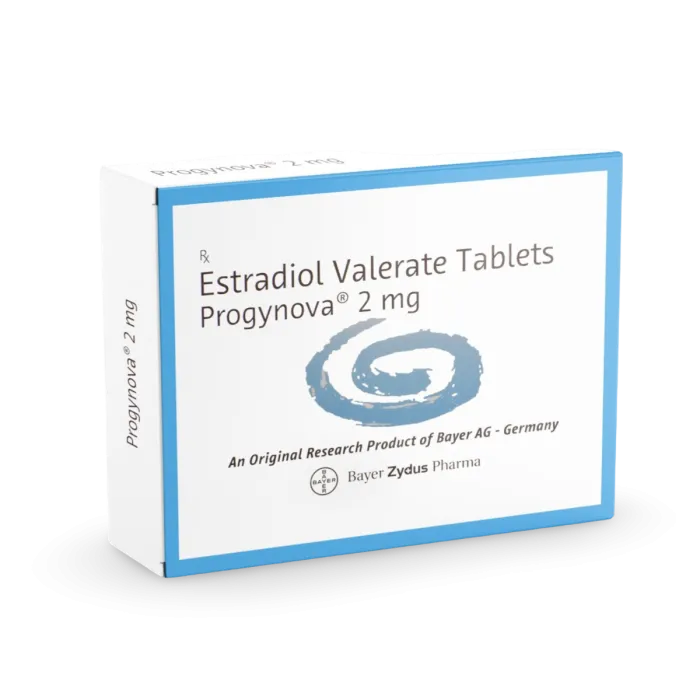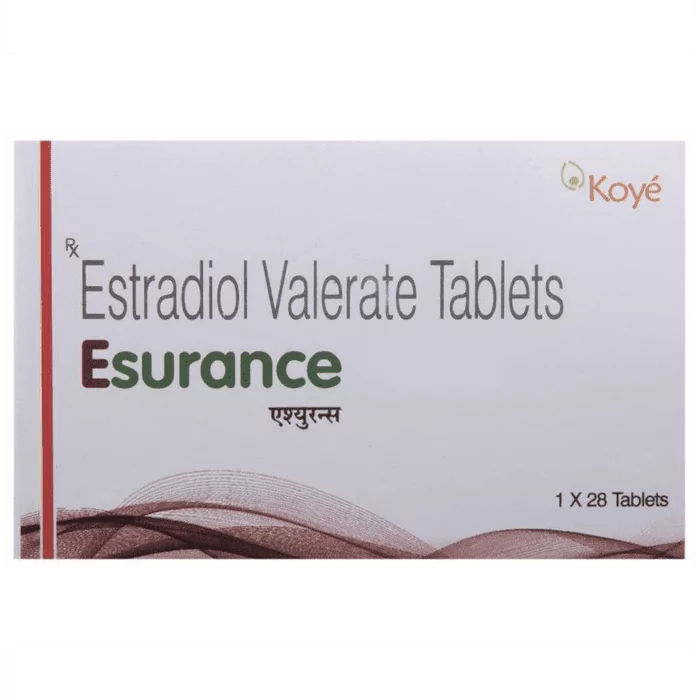Estradiol is a natural hormone present in all individuals. It is a type of Estrogen. Estradiol influences your body’s growth, development, and health. Estradiol levels change as you age and can affect how you feel daily.
While most people know it’s essential for women, Estradiol also affects men and children. If your levels are not healthy, you may notice mood, energy, or body changes.
Understanding your Estradiol levels is vital if you’re trying to manage hormone-related symptoms, going through Menopause, or dealing with fertility or sexual health issues. High and low levels can cause problems; proper treatment depends on accurate diagnosis and care.
This article will help you understand normal Estradiol levels by age, what they mean for you, and what you can do if your levels are too high or too low. You will also learn how the levels in women and men are measured, what affects them, and when you should talk to a doctor.
What is Estradiol?
Estradiol, or E2, is the most potent and common form of Estrogen, a hormone your body produces. It plays a meaningful role in many bodily functions, including sexual development, bone strength, brain function, reproductive health, mood, and skin health.
Estradiol levels are usually higher in women, but remain essential for health in both sexes. Levels can change based on age, gender, health, and life stages like puberty, pregnancy, or Menopause.
In women, the ovaries produce most of the Estradiol. In men, the testes and conversion of Testosterone are the main sources.
Both men and women also make small amounts of Estradiol from other hormones in the adrenal glands and fat tissue.
Estradiol helps your body with:
- Developing and maintaining sexual characteristics
- Building and maintaining strong bones
- Supporting brain function and cognitive health
- Regulating reproductive system health
- Influencing mood and emotional well-being
- Maintaining healthy skin
Save up to 90% on your medicine bills

Progynova 2 mg

Oestrogel 2.5 gm / 1.5 mg

Estrabet 2 Tablet

Esurance Tablet
How Estradiol levels are measured
Doctors usually check levels of Estradiol with a blood test. The test measures Estradiol in picograms per milliliter (pg/mL). Sometimes, a doctor may suggest a urine test, but blood tests are more common and reliable.
You may need to fast or avoid certain medicines before the test. Your doctor will tell you how to prepare. Estradiol levels in women are often checked at a particular time in the menstrual cycle for best results.
Normal Estradiol levels by age and group
Your levels of Estradiol depend on your age, gender, and stage of life. Here’s a general breakdown:
| Group/Phase | Normal Estradiol levels (Picograms per Milliliter or pg/mL) |
|---|---|
| Premenopausal women | 30 to 400 |
| Postmenopausal women | Less than 10 to 30 |
| Men | 10 to 40 |
| Children (prepubertal) | Undetectable to 20 |
| Estradiol levels during pregnancy (3rd trimester) | Up to 50,000+ |
Estradiol levels in women
The levels of Estradiol in women are not the same every day. They change during your monthly cycle, pregnancy, and Menopause:
- Estradiol levels in women change during the menstrual cycle. They are lowest at the start and peak before Ovulation.
- In the first part of your cycle, Estradiol is low.
- It rises before Ovulation and drops after.
- During pregnancy, the levels of Estradiol go up a lot to support your baby. It rises quickly and reaches its highest in the third trimester. Low Estradiol levels during pregnancy may be linked to certain risks, like Preeclampsia or miscarriage. Always talk to your doctor if you have concerns.
- The levels of Estradiol start to fall during Perimenopause (the years before Menopause), which can cause symptoms like hot flashes. The levels drop sharply, which is a regular part of aging.
- As you enter Menopause, your ovaries make less Estradiol. This decrease can cause symptoms like hot flashes, mood changes, and bone loss. Healthy Estradiol levels are essential for bone and heart health after Menopause.
Estradiol levels in men
The levels of Estradiol in men are lower than in women, but are still necessary for health. Normal estradiol levels in men help keep bones strong and support brain and heart health.
Healthy Estradiol levels in men are typically between 10 and 40 pg/mL. Male Estradiol levels by age can change slightly, but typically stay in this range.
Estradiol levels in children
Normal Estradiol levels in children are very low. Before puberty, most children have levels of Estradiol that are either undetectable or measure up to about 20 pg/mL. These low levels reflect that the ovaries and testes are not fully active in producing sex hormones.
As children enter puberty, levels of Estradiol begin to rise, especially in girls, signaling the start of sexual development and reproductive maturity. Monitoring Estradiol can help assess normal growth and development during childhood and adolescence.
Symptoms of High Estradiol levels
If your Estradiol levels are too high, you may notice changes in your body or mood.
High Estradiol symptoms in women include:
- Irregular periods
- Breast tenderness
- Mood swings
- Headaches
- Increased risk of certain Cancers
Main High Estradiol (Estrogen) symptoms in men can include:
- Reduced sex drive
- Mood changes, including irritability and trouble focusing
- Enlarged breast tissue (Gynecomastia)
- Erectile Dysfunction
- Infertility
Symptoms of Low Estradiol levels
Low Estradiol levels can also cause problems. If you have Low Estradiol symptoms, check if your levels are healthy.
Low Estradiol symptoms in women include:
- Hot flashes
- Night sweats
- Vaginal dryness
- Mood changes
- Trouble sleeping
Low Estradiol symptoms in men include:
- Weak bones (Osteopenia or Osteoporosis)
- Low sex drive
- Trouble with erections
- Low mood or depressive symptoms
Factors affecting Estradiol levels
Many things can change your estradiol levels. Some are natural, while health conditions or medicines cause others.
Causes of High Estradiol levels include:
- Pregnancy
- Polycystic Ovary Syndrome (PCOS)
- Certain tumors, particularly Estrogen-producing tumors (such as ovarian or adrenal tumors)
- Hormone Replacement Therapy, fertility treatments, birth control pills, or other medications containing Estrogen
- Being overweight
- Liver disease
Causes of Low Estradiol levels include:
- Menopause
- Ovarian failure (Primary Ovarian Insufficiency)
- Pituitary gland issues (such as Hypopituitarism)
- Intense exercise and/or very low body fat
- Genetic conditions like Turner Syndrome
- Certain medicines, such as Chemotherapy agents, some Non-steroidal Anti-inflammatory Drugs (NSAIDs), and some hormonal therapies
When to get tested for Estradiol levels
You may want to check your Estradiol levels if:
- You have symptoms of High or Low Estradiol.
- You are having trouble getting pregnant.
- You are starting Menopause or Perimenopause.
- You have irregular periods.
- You are taking hormone therapy.
Always talk to a doctor before testing. They can help you understand your results and what they mean for your health.
Keeping Estradiol levels healthy
You can support your Estradiol balance through lifestyle and medical care.
Lifestyle tips
You should try to:
- Maintain a healthy weight
- Get regular exercise
- Maintain a diet with plenty of whole grains, fruits, and lean proteins
- Avoid smoking and limit alcohol
Medical care
If levels are too high or too low, your doctor may suggest:
- Hormone therapy
- Treating the root cause, like PCOS or thyroid issues
- Adjusting medications
Estradiol levels during Perimenopause and Menopause often require tailored care. Your needs may change over time.
Conclusion
Estradiol is one of the most essential hormones in your body. It supports sexual development, bone strength, brain health, mood, and more. Estradiol levels naturally change with age, health, and life stages like puberty, pregnancy, Perimenopause, and Menopause.
Normal levels of Estradiol vary by group. Women’s levels shift during the menstrual cycle and rise sharply during pregnancy. Men have lower but steady levels. Children begin with very low levels that increase during puberty.
Both high and Low Estradiol levels can lead to uncomfortable symptoms, such as mood swings, low sex drive, irregular periods, or weak bones. Health conditions, medicines, or lifestyle changes can affect your levels.
A blood test can help check your Estradiol level. If needed, your doctor may suggest lifestyle changes or hormone therapy.
Always speak with a doctor before making decisions about testing or treatment. With proper care, you can support healthy hormone levels and feel your best at any stage of life.

FAQs
What is a normal Estradiol level to get pregnant?
A normal Estradiol level to help you get pregnant usually ranges from 30 to 400 picograms per milliliter. This level changes during your menstrual cycle. It helps your body prepare for pregnancy by supporting egg growth and the uterine lining.
Could high or Low Estradiol levels explain my symptoms?
Yes, high or low estradiol levels can explain your symptoms. Estradiol is a hormone that affects many parts of your body. When its levels are not balanced, you might feel tired, moody, or notice changes in your skin or sleep. A blood test can help check your Estradiol levels.
When should I consider testing my Estradiol levels regularly?
You should consider testing your Estradiol levels regularly if you have hormone problems, trouble with periods, fertility issues, or signs like mood swings or hot flashes. Regular tests help you track changes and manage your health better with your doctor’s advice.
How does Estradiol work in Hormone Replacement Therapy (HRT), and what should you know before starting it?
Estradiol in HRT helps manage symptoms of Menopause or low hormone levels. It can be used alone or with other hormones. Transdermal forms (like patches or gels) are often safer, while pills may carry more risks. If you have a uterus, you might also need Progestogen to protect it.
Cheap Medicine Shop only refers to credible, authoritative sources for our content. If you’re curious about how we ensure the integrity of our content, we encourage you to read our Content Information Policy.














